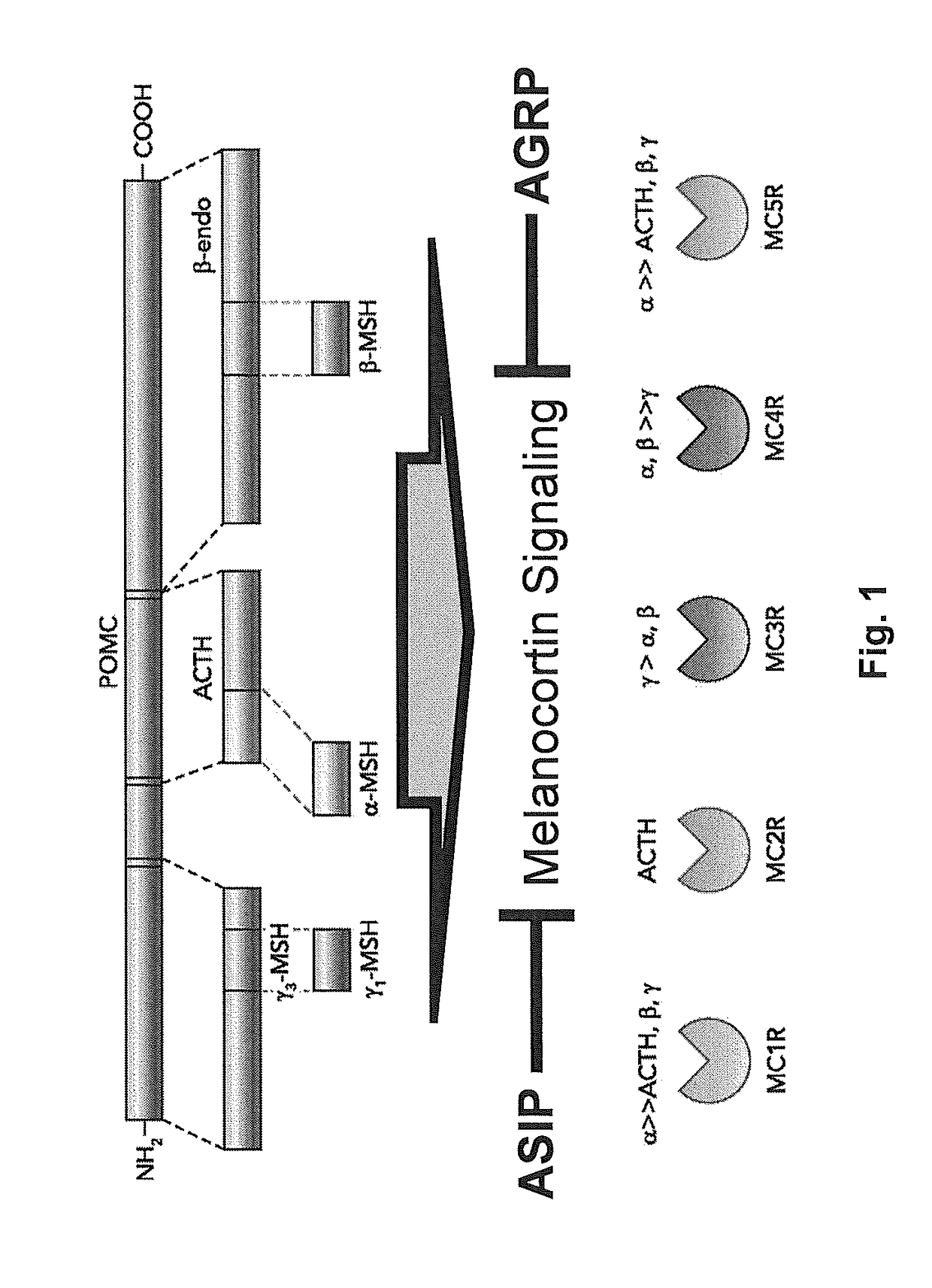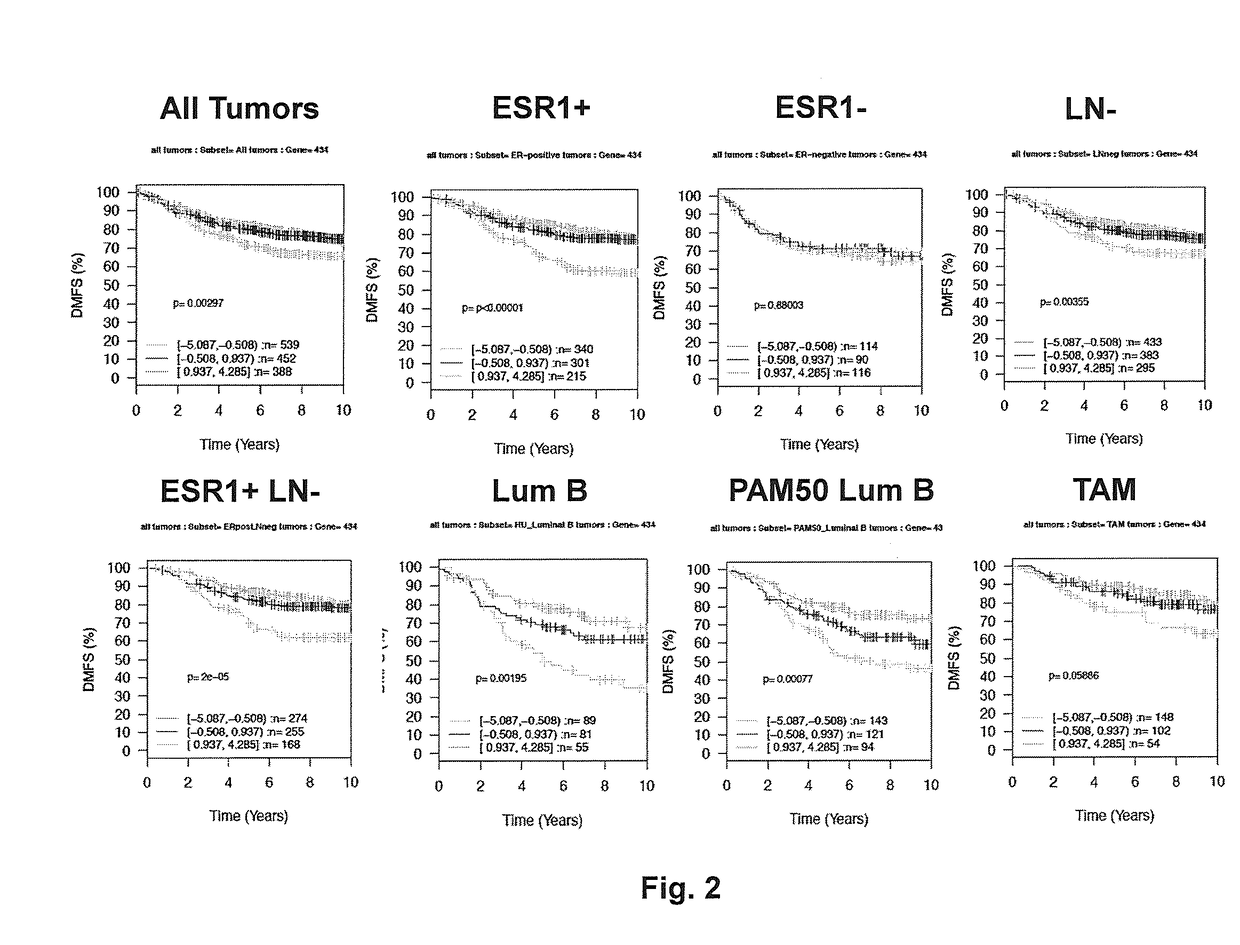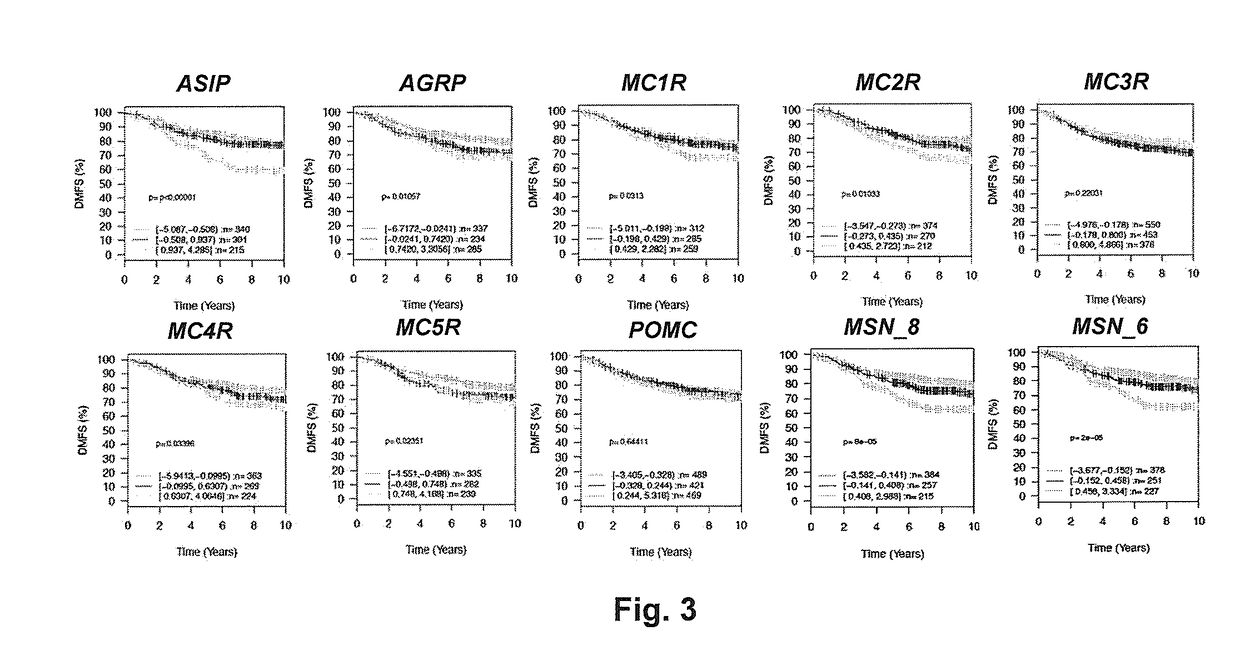Biomarkers for breast cancer and methods of use thereof
- Summary
- Abstract
- Description
- Claims
- Application Information
AI Technical Summary
Benefits of technology
Problems solved by technology
Method used
Image
Examples
example 1
ng of Gene Expression Data to Evaluate the Relationship Between Expression of ASIP and the MSN Genes and Clinical Outcomes of Breast Cancer
[0071]The relationships between expression of specific genes at the mRNA level and progression of early stage breast cancers to metastatic disease were evaluated using publically available datasets and the online data mining tool GOBO: Gene Expression-Based Outcome for Breast Cancer Online. The datasets utilized in these analyses were generated using Affymetrix U133A oligonucleotide arrays and have been described in the art. These datasets were merged into a single dataset totaling 1881 samples as described in the art. The GOBO informatics tool accepts query inputs to be in the form of gene symbol, gene id number (NCBI) or Affymetrix probe id number. All queries were performed using gene id numbers. The GOBO tool evaluates associations between the level of expression of the gene of interest and selected clinical outcomes, including overall surviv...
example 2
oves the Predictive Power of OncoType DX®
[0074]OncoTypeDX® is an established tool for predicting progression of early stage breast cancers. Therefore, we evaluated the potential of ASIP to enhance the ability of the OncoTypeDX® gene set to predict progression. The OncoTypeDX® gene set consists of 16 genes that have functional relationships to various cancer-related cellular processes and 5 genes that are believed to be constitutively expressed in most cell types and are used to normalize expression across sample sets. OncoTypeDX® calculates a predictive recurrence score using a proprietary algorithm that applies different weights to the individual genes within the gene set. Analyses were performed to compare the OncoTypeDX® 16 gene weighted gene set (OTDX) with a gene set comprised of the same 16 weighted genes plus ASIP (OTDX+ASIP)(Table 2, FIGS. 4-6). These analyses were restricted to the subset of patient samples classified as ESR1+. As expected, the OncoTypeDX® weighted gene set...
example 3
oves the Predictive Power of PAM50—Prosigna®—Nanostring Technologies
[0076]The PAM50 gene panel is an established set of 50 genes whose level of expression is used to assign individual breast cancers into defined subtypes that differ in their clinical behavior. A subset of the patient samples accessible through the GOBO informatics tool were annotated with respect to PAM50 subtype. Therefore, we evaluated the ability of ASIP and other MSN genes to identify breast cancer samples within the defined PAM50 subtypes that differ in their clinical behaviors based on time to progression; i.e., DMFS. ASIP expression was significantly inversely associated with DMFS (i.e., high expression—rapid progression) in the subset of patient samples defined as Luminal B using the PAM50 gene panel (p=0.00077; n=358)(FIG. 1). No significant associations were observed between ASIP expression and DMFS in the PAM50 Basal (p=0.88, n=251), PAM50 HER2 (p=0.44, n=166), PAM50 Luminal A (p=0.13, n=323) or PAM50 Nor...
PUM
| Property | Measurement | Unit |
|---|---|---|
| diameter | aaaaa | aaaaa |
| prognostic power | aaaaa | aaaaa |
| fluorescence in situ hybridization | aaaaa | aaaaa |
Abstract
Description
Claims
Application Information
 Login to View More
Login to View More - R&D
- Intellectual Property
- Life Sciences
- Materials
- Tech Scout
- Unparalleled Data Quality
- Higher Quality Content
- 60% Fewer Hallucinations
Browse by: Latest US Patents, China's latest patents, Technical Efficacy Thesaurus, Application Domain, Technology Topic, Popular Technical Reports.
© 2025 PatSnap. All rights reserved.Legal|Privacy policy|Modern Slavery Act Transparency Statement|Sitemap|About US| Contact US: help@patsnap.com



